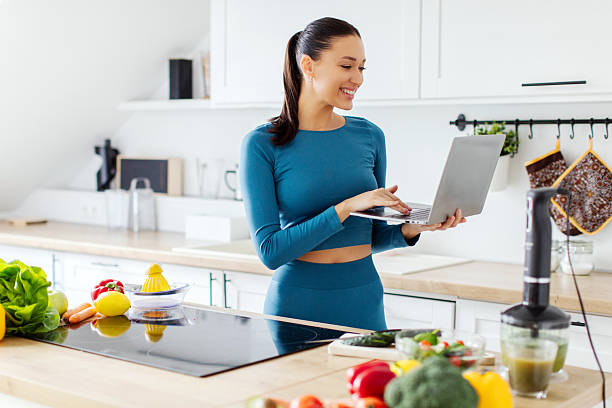
Whether you’re just starting your food blog or already posting weekly recipes, mastering SEO (Search Engine Optimization) is one of the smartest ways to grow your blog traffic and make money. With thousands of food blogs publishing daily, knowing how to rank your recipe posts is the key to long-term success.
In this guide, you’ll learn 12 actionable SEO strategies, specifically for food bloggers. These are not just generic tips, but real techniques tailored to help your recipe content rank higher and reach the right audience.
Tip: Need help starting your blog? Check out how to start a food blog and how to build your brand on Instagram.
Why SEO Matters for Food Bloggers
SEO is the secret weapon behind almost every successful food blog. Without it, even the most delicious and beautifully photographed recipes risk going unseen. SEO helps your content reach the right people at the right time, people who are already searching for recipes like yours on Google.
Here’s why mastering SEO is essential if you’re a food blogger:
- Massive competition: There are thousands of food blogs and recipe websites online. SEO is how you differentiate and get discovered.
- Organic traffic is sustainable: Unlike social media, where visibility is fleeting, SEO brings consistent, long-term visitors without paying for ads.
- Higher visibility = more income: Ranking on page one of Google means more people see your content, which increases ad revenue, affiliate earnings, and potential brand collaborations.
- Authority building: Ranking high consistently positions you as a trusted voice in your niche.
- Compounding value: A well-optimized recipe post today can continue to bring traffic and income for years to come.
Whether you’re sharing your grandmother’s cookie recipe or crafting plant-based creations, SEO helps ensure your blog is more than a passion project, it becomes a discoverable and profitable digital asset.
Step 1: Do Keyword Research Like a Food SEO Pro
Your SEO journey begins with understanding what your audience is actually searching for. Keyword research helps you uncover those exact phrases, questions, and recipe names people are typing into Google. Without this insight, you’re essentially guessing, and that means missed opportunities.
Start by identifying a specific recipe idea. Instead of targeting broad keywords like “pancakes,” narrow down with something like “fluffy protein pancakes without banana.” These long-tail keywords are less competitive and more likely to rank faster.
How to Do It:
- Use long-tail keywords like “gluten-free pumpkin muffins with almond flour”
- Type variations into Google and observe autocomplete suggestions
- Use free tools like Ubersuggest, Answer the Public, and Google Trends
- Spy on competitor blogs to analyze the structure, keywords, and angles they use
Doing this research upfront ensures your recipes are not only helpful but also findable.
Related: How to increase your website page views
Step 2: Use Recipe Schema Markup
Search engines like Google want to understand your recipe post in as much detail as possible. That’s where schema markup comes in. It provides structured data that helps search engines identify your recipe’s ingredients, instructions, cook time, nutrition details, and more.
Using Recipe Schema can turn your search result into a rich snippet that stands out with star ratings, cooking times, and even thumbnail images, giving you a serious advantage in the rankings.
Implementation:
- Install plugins like WP Recipe Maker or Create by Mediavine
- Make sure each recipe includes detailed info: ingredients, steps, cook/prep time, servings
- Validate your schema with Google’s Rich Results Test
Recipes with schema markup look more professional, earn more clicks, and perform better in search.
Step 3: Craft SEO-Friendly Titles, URLs & Meta Descriptions
Think of your title, URL, and meta description as your blog post’s front cover. These elements influence both how Google ranks your content and whether users actually click through to read it.
A strong title includes the main keyword and uses emotionally engaging or benefit-driven language. Your URL should be short, clean, and keyword-rich. And your meta description should offer a compelling reason to click.
Best Practices:
- Use the primary keyword near the beginning of the title
- Add power words like “easy,” “creamy,” “vegan,” or “kid-approved.”
- Write meta descriptions under 160 characters that highlight benefits
- Keep slugs short and descriptive:
/easy-chicken-fried-rice
This trio helps improve rankings, CTR, and user clarity.
Read: Google SEO Guide
Step 4: Structure Your Posts for Readability and SEO
Once visitors land on your blog, the goal is to keep them engaged. A well-structured blog post not only improves readability but also helps search engines index your content correctly.
Readers don’t want to scroll through a wall of text. They want clear sections, visual breaks, and easy navigation, especially on mobile.
Structure Guide:
- Use H2 and H3 headings for sections like Ingredients, Instructions, Tips, and FAQs
- Include a “Jump to Recipe” button
- Break long paragraphs into digestible chunks
- Use bullet points for clarity
- Add internal links to related recipes and evergreen blog content
A well-structured post leads to more time-on-site and lower bounce rates, both positive SEO signals.
Step 5: Optimize Every Image (Image SEO)
Food blogs are visually friendly sites, and your images do more than make mouths water; they can also get your traffic via image search and boost on-page SEO.
Every image you upload should be intentionally optimized with both humans and search engines in mind.
How to Optimize:
- Rename files with keywords:
keto-brownie-recipe.jpg - Use descriptive ALT text that includes the focus keyword
- Compress images with tools like TinyPNG or ShortPixel to reduce load time
- Enable lazy loading and use the WebP format for better performance
Read: How to optimize website images
Google can’t “see” your images, but with proper SEO, it can understand and rank them.
Step 6: Speed Up Your Website
Speed is a ranking factor, and a slow website can drive readers away before they even see your recipe. Search engines prioritize sites that load quickly and perform well across devices.
As a food blogger, heavy image files, video embeds, and long content can bloat your pages, but there are ways to keep everything snappy.
Fixes:
- Test with PageSpeed Insights for insights and suggestions
- Enable browser caching and minify CSS/JS
- Compress images and eliminate unused plugins
- Use reliable hosting and consider a CDN for faster global access
A faster site improves SEO, user experience, and ad revenue potential.
Step 7: Internal Linking Strategy
Internal links are essential for both user experience and SEO. They guide your visitors to other valuable content on your blog, increasing the time they spend on your site and signaling to Google that your site is comprehensive.
When done right, internal linking helps distribute link equity across your website and builds topical authority.
Where to Link:
- Link to related recipes to keep readers engaged
- Add links to cornerstone content, like how to make money as a food blogger
- Link to your food blog income report for credibility and inspiration
Use descriptive anchor text and be intentional with each link to keep users and search engines on the right path.
Step 8: Build Backlinks Through Authority Sites
Backlinks from other reputable websites are one of the strongest signals Google uses to rank content. The more high-quality links pointing to your food blog, the more credible and authoritative it appears.
Luckily, food blogging offers natural backlink opportunities if you know where to look.
How to Earn Them:
- Submit your recipes to food-sharing sites like FoodGawker
- Pitch guest posts using this guest blogging guide
- Reach out to complementary bloggers like Cookie and Kate or Smitten Kitchen for collaborations
- Share content on Pinterest and encourage repins that can generate links
Building backlinks takes time, but they’re worth the investment for long-term traffic growth.
Step 9: Improve Engagement Signals
Google watches how users behave on your site. Are they sticking around? Clicking other links? Leaving quickly? These behavior metrics, like bounce rate and dwell time, are called engagement signals, and they affect your rankings.
To improve engagement, make your posts interactive and personal. Invite readers to be part of the experience.
Ways to Boost Engagement:
- Use recipe rating stars
- Ask readers to share feedback or variations in the comments
- Add a personal story or behind-the-scenes content
- Embed how-to videos or social proof
The more time visitors spend with your content, the more Google sees your blog as helpful.
Step 10: Track Performance with Google Tools
You can’t improve what you don’t measure. Google provides two free tools, Analytics and Search Console, that give you valuable insights into how your blog is performing.
These platforms help you identify what content works, which keywords are bringing traffic, and where you can improve.
Essential Tools:
- Google Analytics: View traffic sources, user behavior, and content performance
- Google Search Console: Track keyword rankings, click-through rates, crawl errors, and mobile usability
Set these up early and check them weekly to fine-tune your strategy.
Step 11: Update and Republish Old Content
Your older posts are hidden gold mines. If you wrote a recipe two years ago that’s no longer ranking, updating it can breathe new life into it.
Google rewards fresh, comprehensive content, so keeping your blog up to date is not just maintenance, it’s strategy.
What to Update:
- Refresh images with better lighting or styling
- Rewrite intros or add personal stories for relevance
- Add new sections like FAQs or substitution tips
- Improve keyword optimization and re-test the schema
Re-optimizing existing content is often easier and more effective than starting from scratch.
Step 12: Diversify Your Content Beyond Recipes
While recipes are your core, they shouldn’t be the only type of content you publish. Supporting articles around food, cooking techniques, and blogging tips expand your reach and build topical authority.
This also helps you connect with aspiring bloggers, home cooks, and even brands.
Content Ideas:
- Write resource posts like food blog name ideas or blogging mistakes to avoid
- Share tips for new creators: how to build an email list
- Roundups, how-to guides, and product recommendations (e.g., must-have tools for bakers)
The broader your value, the more chances you have to be found and followed.
Your Final SEO Checklist for Every Recipe Post
Before you hit publish on your next recipe, run through this checklist to ensure it’s fully optimized for search and your audience.
Keyword & Content
- ✅ Target a specific long-tail keyword
- ✅ Use keyword in title, slug, meta description, and intro
- ✅ Write a clear, enticing meta description
- ✅ Use keyword variations naturally in the content
Structure for Good User Experience
- ✅ Use proper H2/H3 headings (Ingredients, Instructions, Tips, etc.)
- ✅ Add “Jump to Recipe” button
- ✅ Break up long blocks of text
- ✅ Include FAQs or tips for substitutions
Recipe Schema
- ✅ Add structured data using a plugin like WP Recipe Maker
- ✅ Include cook/prep time, ingredients, nutrition, etc.
- ✅ Validate schema with Google Rich Results tool
Images & Speed
- ✅ Use descriptive filenames and ALT text
- ✅ Compress images and use lazy loading
- ✅ Test site with PageSpeed Insights
- ✅ Host videos externally (e.g., YouTube) if needed
Links & Engagement
- ✅ Add internal links to related posts or evergreen guides
- ✅ Link to cornerstone content (like blog income or monetization tips)
- ✅ Encourage comments or shares
- ✅ Enable recipe ratings
Promotion & Analytics
- ✅ Share to food sharing directories
- ✅ Promote on Pinterest with optimized pins
- ✅ Track performance in Google Analytics and Search Console
- ✅ Update older posts periodically to stay relevant
My Final Thoughts
SEO doesn’t need to be overwhelming. With these 12 smart, actionable strategies, you can improve your blog’s discoverability, attract the right readers, and earn more from your passion.
Start small, focus on 2 to 3 steps first, then build. Your rankings (and your audience) will thank you.
Ready to level up your food blogging journey? Explore our full guide on how to start guest blogging for backlinks, and how to build an email list to keep your readers coming back.
Want even more strategies? Join our newsletter for exclusive blogging insights, SEO tips, and income growth ideas.

![9 Best Ad Networks For Bloggers [Most Profitable]](https://inwebmastro.com/wp-content/uploads/2024/11/pexels-fauxels-3183150-300x200.jpg)





